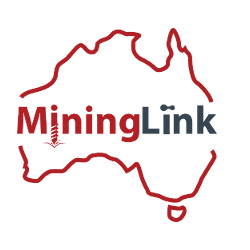Kenya water treatment plant
http://www.qgc.com.au
coal-seam-gas, Town, DiDo
Phone:
Address:
18-20 Bell St, Chinchilla, QLD, 4413
State: 18-20 Bell St, Chinchilla, QLD, 4413
Email:
The Kenya Water Treatment Plant is located in Southern Queensland's Western Downs, 35 kilometres from Chinchilla. It is a water treatment plant that was commissioned in 2013 to treat water from the Walloon coal seams where coal seam gas is extracted. The water, when treated, supplies drinking water to the town of Chinchilla.
Kenya Water Treatment Plant is part of the Giant Curtis Island LNG Project
The plant was constructed as part of the giant Queensland Curtis LNG (QCLNG) project being undertaken by QGC, a fully owned subsidiary of the international BG Group . The QCLNG project is to be the first in the world to convert coal seam gas into marketable liquefied natural gas. The Kenya Water Treatment Plant is one of two major water treatment plants and a smaller re-locatable plant, to be included in the QCLNG overall project. The plant was constructed by a consortium of engineering and construction companies comprising Laing O'Rouke and GE Betz.
Construction of the Kenya Water Treatment Plant Began in 2011 and Completed in 2013
Work on the Kenya Water Treatment Plant began in 2011 and was completed in 2013. It has a capacity to handle 95,000 square metres of water a day. The water produced at the plant will be used by the local agricultural industry as well as for the supply of drinking water to the town of Chinchilla. Water from the plant is managed by SunWater through its Kenya to Chinchilla Weir 20 kilometre underground pipeline. The 20 year contract to operate the three water treatment plants, that includes the Kenya Water Treatment Plant, has been awarded to Veolia Water.
Coal Seam Gas Water Treated at the Kenya Water Treatment Plant
The water treated at the Kenya Water Treatment Plant and its associated plants, will be coming from around 6,000 coal seam gas wells. The water from the wells is separated from the gas at a well-head on the surface. At this stage it is known as coal seam gas water that contains a high concentration of salt. This water is taken a distance of around six kilometres, via pipelines, to six central storage ponds. It is pumped from the storage ponds to the Kenya Water Treatment Plant, or one of the other plants, through a system of pump stations. The treated water is then distributed for industrial, agricultural and municipal use.
Kenya Water Treatment Plant Uses Latest Technology
The Kenya Water Treatment Plant uses Reverse Osmosis (RO) technology as its primary water treatment method. This technology incorporates storage equipment, brine concentrators, dosing and balancing systems, reverse osmosis desalination, ion exchange and ultrafiltration (UF). The plant itself includes its own gas fired power plant that uses coal seam methane from its own gas fields as its fuel. The power plant exists of seven J620 Jenbacher gas engines and three Waukesha 12V 275GL+ mechanical drive engines, each having an output of 3.3 megawatts.
The brine concentrators at the Kenya Water Treatment Plant receives RO rejects and separates the purified water from the concentrated brine. The brine concentrator is configured with heat exchangers, concentrated brine recirculation, de-aerators, discharge pumps, compressors with gas drive engines, gas fired boilers, distillate pumps and tanks, controls and instrumentation and double plastic lined concentrated brine ponds. The resulting salt that is acquired during this process is stored at two central storage facilities.
The QCLNG project requires the expansion of Surat Basin gas production
in southern Queensland. The project involves the construction of 540 kilometre underground pipeline to Gladstone where a plant is being built on Curtis Island to liquefy the gas for both the domestic and export market. The plant is expected to be operational in 2014.

